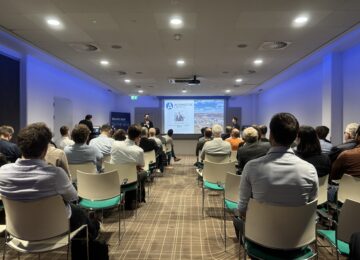Facilitating policies needed for home and neighborhood batteries
Research firms CE Delft and Witteveen+Bos today presented the study "Home and neighborhood batteries: opportunities, bottlenecks and policy recommendations. The report reveals that home and neighborhood batteries can be grid-congestion neutral and also play a potential role in reducing peak loads on the low-voltage grid. Energy Storage NL considers it necessary to introduce policy measures to connect home and community batteries in a grid-neutral and grid-supporting way.
Role in congestion and security of supply
With optimal deployment of home and neighborhood batteries, the peak on the low-voltage grid can be reduced by 5% to 30%. However, the research firms conclude that with the current policy, batteries increase the peak to a large extent due to deployment on the energy markets. CE Delft and Witteveen+Bos therefore call on grid operators to develop a policy framework in which, among other things, home and neighborhood batteries can be connected congestion-neutral through tariffs. In addition to grid congestion, home and neighborhood batteries can play a role in ensuring security of supply. It is therefore also recommended that the role of home and neighborhood batteries be included in the design of any policy around security of supply.
Social contribution home and neighborhood batteries
CE Delft and Witteveen+Bos have also done specific research on the social impact of home and neighborhood batteries in reducing the manufacturability gap of grid operators, accelerating the Dutch housing challenge and potentially reducing CO2 emissions in the Netherlands.
Around the feasibility gap - the situation where not all power grid expansions can be realized in a timely manner by grid operators - the researchers conclude that the deployment of neighborhood batteries can reduce the grid operator's workload in the situation where transformer capacity at a grid station cannot be expanded.
For the housing task, home and neighborhood batteries, in an area development locked by grid congestion, can offer a solution. On the one hand, by adding a battery behind the meter and capturing peaks (peakshaving). On the other hand, by dividing the scarce space with a number of connections and absorbing the group's peak demand with a battery. That battery could be located behind a (large) connection, but this could also possibly be a neighborhood battery with its own connection that is part of the group connection.
Home and community batteries can provide CO2 reduction in the Netherlands. It is estimated that the national CO2 reduction potential for batteries is between 40 kg and 100 kg CO2 per system per year. This reduction could increase further if home and community batteries also facilitate additional deployment of solar panels. In doing so, the research firms do report that home and neighborhood battery production increases CO2 emissions abroad.
Energy Storage NL: consider supporting measures
Industry organization Energy Storage NL (ESNL) sees that with the addition of decentralized batteries, but also with the deployment of charging stations, (hybrid) heat pumps, etc., various energy flows come together at the local level, which can be undesirable in some situations. On the contrary, what the study shows is that home and neighborhood batteries vs. other technologies on the low-voltage grid can also solve congestion to some extent. Hence the industry association's call for a positive approach to policy so that home and neighborhood batteries can be supportive of the grid. ESNL agrees that grid congestion-neutral should be the starting point, but excessively limiting battery deployment is unwise since there are only a limited number of technologies available that actively reduce grid congestion and also because in the long term these batteries can play a major role in ensuring security of supply.
CE Delft and Witteveen+Bos further conclude that home and neighborhood batteries are expected to be developed only on a small scale, this because there is no positive business case for these batteries. According to ESNL, it is therefore good that the research firms argue in the study to remove obstacles such as the net-metering scheme and the double energy tax for these batteries. Even then, financial support for a profitable business case is desirable. Possibly additional stimulation could be an option if this would allow more solar panels to be connected and thus achieve additional CO2 reduction in the Netherlands or to accelerate the Dutch housing construction task through these batteries. ESNL calls on the government to consider incentives for home and neighborhood batteries on these aspects.
Read the entire report here.
* Energy Storage NL participated in the sounding board group for the study 'Home and neighborhood batteries: opportunities, bottlenecks and policy recommendations'





